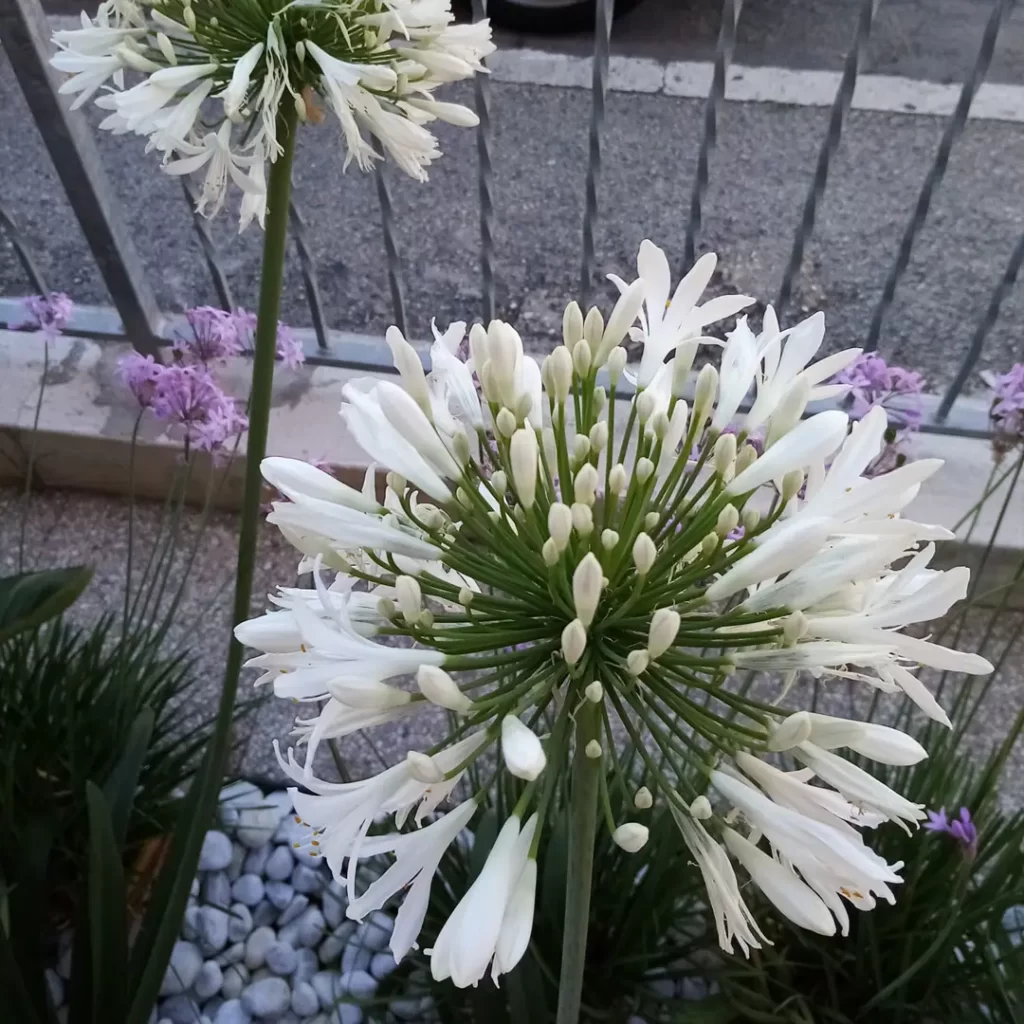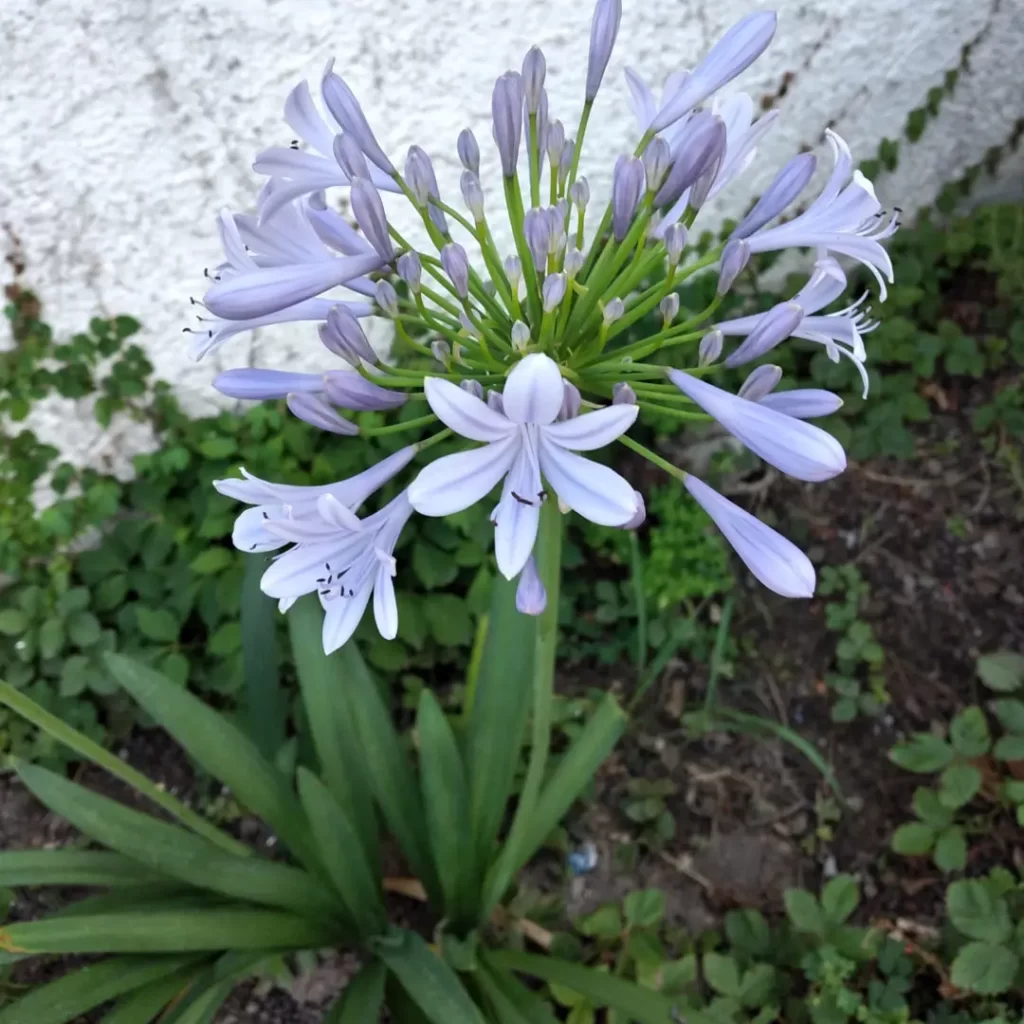Agapanthus, also known as African Lily or Lily of the Nile, is cherished for its striking blue and white flowers, which bring a dramatic focal point to any garden. This perennial plant is a favorite among gardeners due to its resilience, aesthetic appeal, and ability to thrive in a variety of settings. In this guide, we will explore everything you need to know about growing, caring for, and maintaining Agapanthus to ensure they flourish beautifully in your garden.
Understanding Agapanthus: A Botanical Overview
The Agapanthus genus, native to Southern Africa, belongs to the Amaryllidaceae family. This robust perennial is known for its clump-forming foliage and tall, slender stems adorned with ball-shaped clusters of tubular flowers. The two main types of Agapanthus are deciduous (dropping leaves in winter) and evergreen (retaining foliage year-round), with various cultivars to suit different climates and garden designs.
Popular Agapanthus Varieties
- Agapanthus africanus: Ideal for warm climates; features vibrant blue flowers.
- Agapanthus praecox: One of the most common species; noted for its cold tolerance.
- Agapanthus ‘Blue Storm’: Renowned for its profuse blooming and compact growth.
- Agapanthus ‘Snowstorm’: A beautiful white-flowering variety perfect for brightening shady spots.
Ideal Growing Conditions for Agapanthus

For Agapanthus to reach its full potential, providing the right environmental conditions is key.
1. Light Requirements
Agapanthus prefers full sun but can tolerate partial shade, especially in regions with intense summer heat. While some varieties perform well with a few hours of shade, full sunlight is crucial to promote abundant blooming and vigorous growth.
2. Soil Requirements
Agapanthus thrives in well-draining, fertile soil. It thrives best in slightly acidic to neutral pH levels, ranging from 6.0 to 7.0. Ideal soils are sandy or loamy, enriched with organic matter. Avoid overly dense or clay-heavy soils as they can lead to root rot.
3. Temperature and Humidity
Agapanthus is well-suited to USDA hardiness zones 8–11. Deciduous varieties are generally more cold-hardy, while evergreens require milder winters. In cooler climates, Agapanthus can be grown in containers and moved indoors during winter.
Planting Agapanthus: A Step-by-Step Guide
1. Preparing the Site
- Choose a location with ample sunlight and protection from strong winds.
- Prepare the soil by loosening it to a depth of 12–15 inches and enriching it with compost or well-rotted manure.
2. Planting Depth and Spacing
- Dig holes twice the size of the Agapanthus bulbs or root balls, and plant them 2 inches deep for bulbs or level with the surrounding soil for potted starts.
- Space plants 12–24 inches apart to allow ample room for growth.
3. Watering After Planting
After planting, water thoroughly to help settle the soil around the roots. Keep the soil consistently moist during the first few weeks to encourage strong root establishment.
Caring for Agapanthus: Essential Maintenance Tips

1. Watering
Agapanthus is somewhat drought-tolerant but performs best with regular watering. During the growing season, water when the top inch of soil feels dry. Overwatering should be avoided to prevent root rot, particularly in heavy soils.
2. Fertilizing
Feed Agapanthus with a balanced, slow-release fertilizer at the beginning of the growing season. High-phosphorus fertilizers can boost bloom production, but avoid over-fertilization, as it can lead to excessive foliage at the expense of flowers.
3. Mulching
Add a layer of mulch around the plants to retain moisture, regulate soil temperature, and suppress weeds. Avoid stacking mulch against the stems, as this can lead to rot.
4. Pruning and Deadheading
To maintain aesthetic appeal and encourage more blooms, deadhead spent flowers regularly. Cut back foliage after the flowering season if the plant is evergreen, and remove any yellowing or damaged leaves.
Overwintering Agapanthus: Cold-Weather Care
In areas prone to frost or extreme cold, take these precautions to protect Agapanthus plants:
- Container Plants: Move potted Agapanthus indoors or into a greenhouse. Reduce watering and avoid fertilizing during winter dormancy.
- In-Ground Plants: Apply a thick layer of straw or bark mulch to insulate roots. Some gardeners cover their Agapanthus with garden fleece for added frost protection.
For deciduous varieties, prune dead foliage at the end of the growing season.
Propagating Agapanthus: Expanding Your Collection
1. Division Method
The easiest way to propagate Agapanthus is by dividing established clumps. Do this in early spring or after the flowering season.
- Dig up the plant and separate the root clumps with a clean, sharp tool.
- Replant divisions in prepared soil, water well, and keep the soil moist until new growth emerges.
2. Seed Propagation
Growing Agapanthus from seed is possible but may require several years for flowering. Plant seeds in a well-draining potting mix and keep them in a warm, sunny spot.
Common Pests and Diseases Affecting Agapanthus
Although Agapanthus is relatively pest-resistant, some issues may arise:
- Slugs and Snails: These pests can damage young leaves. Use slug bait or barriers to protect plants.
- Spider Mites and Aphids: In dry conditions, these insects can infest Agapanthus. Rinse plants with water or use insecticidal soap as needed.
- Root Rot: Caused by poorly draining soil, root rot can lead to wilting and yellowing foliage. Ensure proper soil drainage and avoid overwatering.
Tips for Extending the Blooming Season
- Deadhead: Removing spent blooms encourages further flowering.
- Regular Feeding: A second application of fertilizer mid-season can promote extended blooming.
- Adequate Sunlight: Ensure the plants receive at least 6 hours of sunlight daily.
Landscaping with Agapanthus: Creative Ideas
Agapanthus makes a stunning addition to various garden styles:
- Border Planting: Agapanthus works beautifully in borders alongside plants like lavender and salvia.
- Container Gardens: Ideal for patios and small spaces, potted Agapanthus adds a vertical dimension to container arrangements.
- Poolside Landscaping: Its drought tolerance and upright growth habit make Agapanthus a favorite for sunny poolside gardens.
Conclusion
By understanding the unique requirements of Agapanthus and following proper planting and care techniques, gardeners can enjoy the lush blooms and enduring beauty of this African native. Whether you’re planting them as border plants, in containers, or as striking focal points, Agapanthus will reward you with a reliable display of flowers each season.

